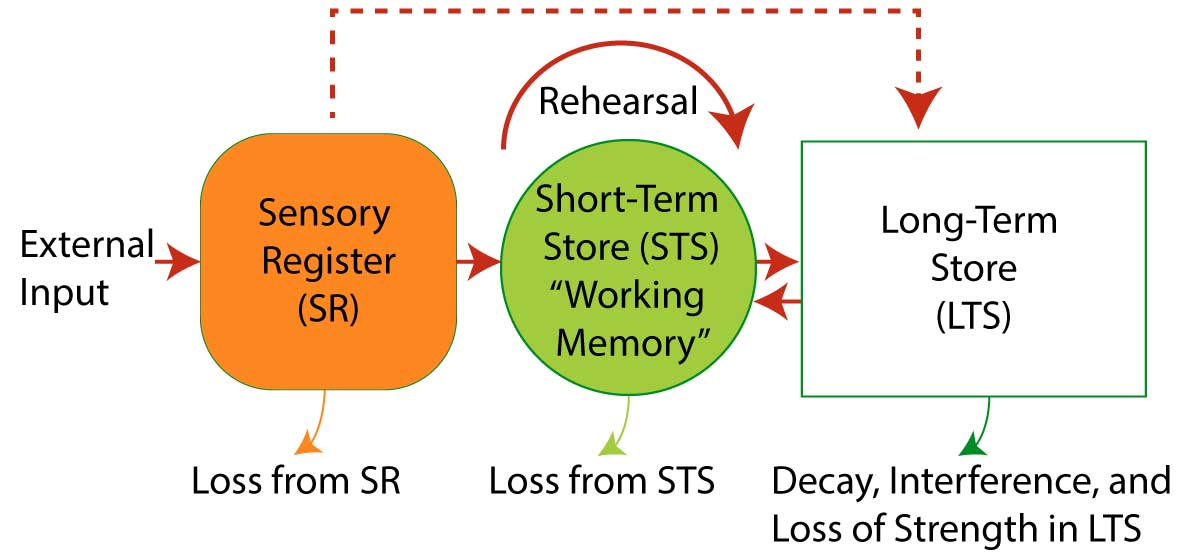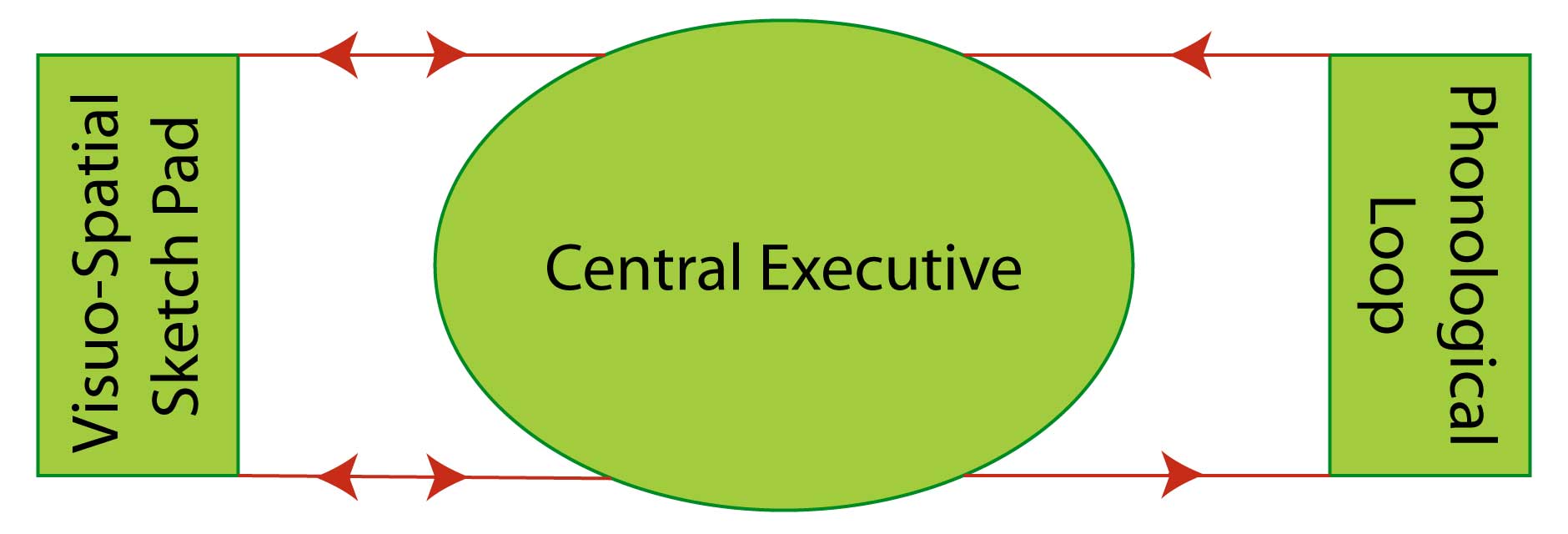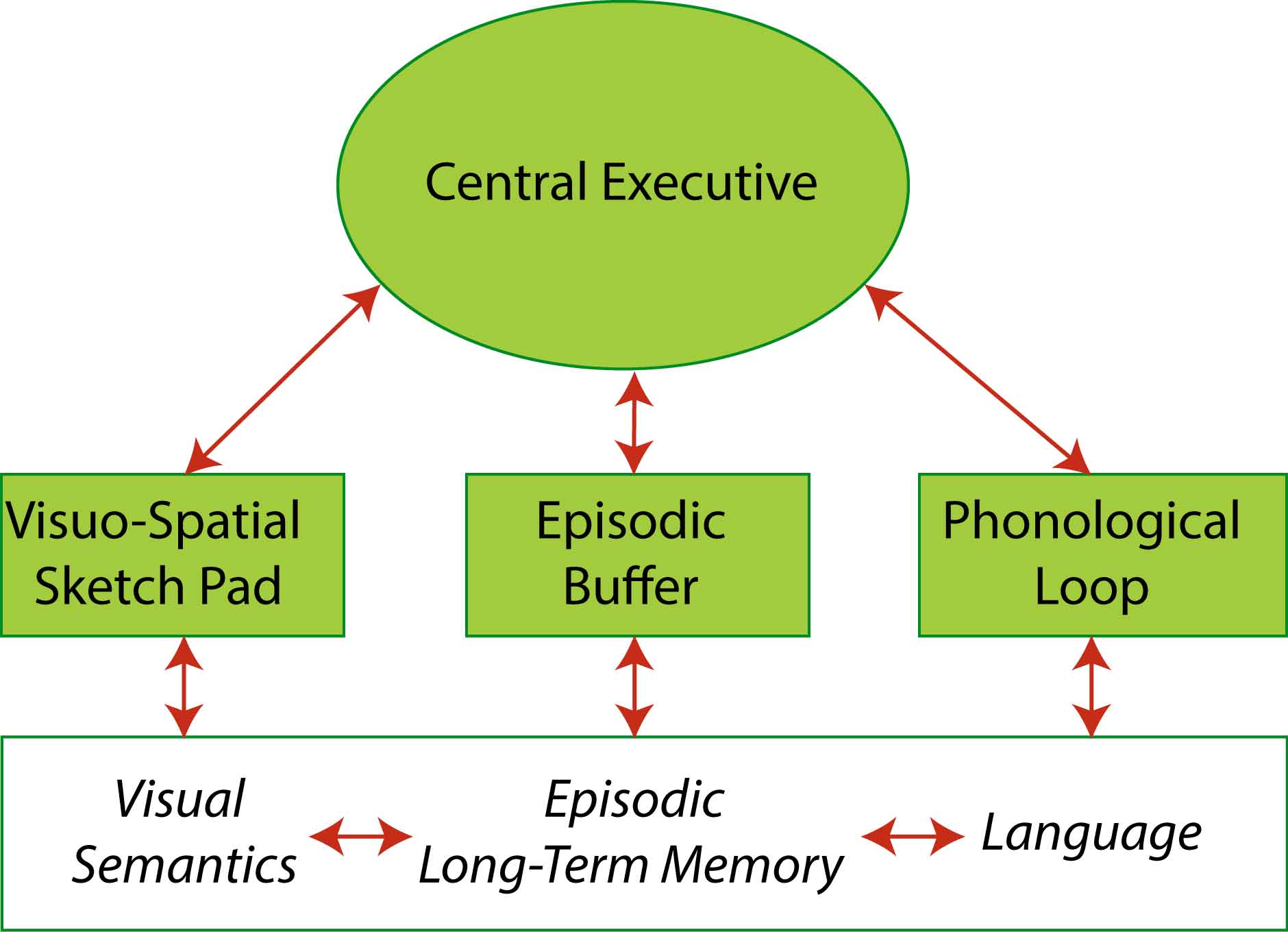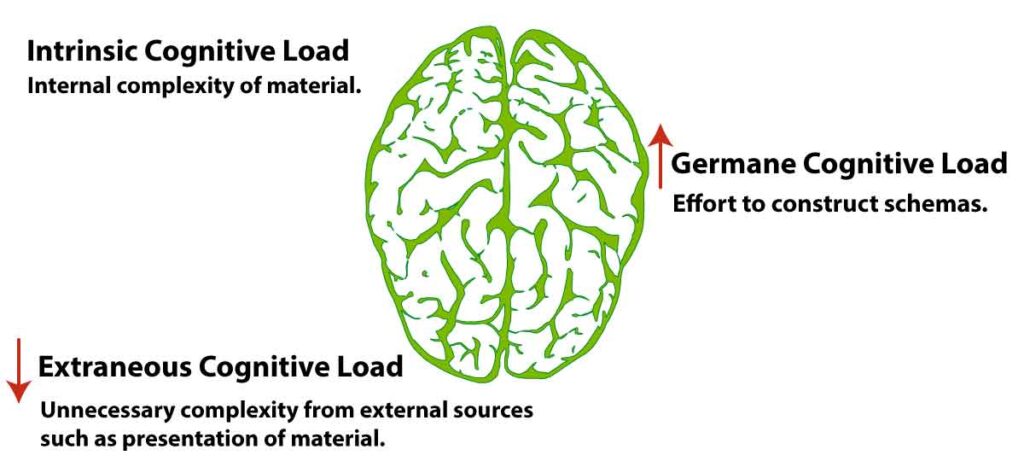
Estimated reading time: 12 minutes
John Sweller developed cognitive load theory in the late 1980s to explain how a task’s difficulty level can affect our ability to process and store material in long-term memory. Cognitive load theory relies heavily on the concept of “working memory,” a short-term storage system that is limited not only by how much information it can hold, but also for how long. Tasks with a high cognitive load can exhaust working memory capacity and consequently affect performance on any concurrent task that is performed.
In order to measure a task’s “cognitive load,” researchers have traditionally used both subjective ratings of task difficulty and objective measures such as performance on a secondary task. In recent years, researchers have also explored the extent to which changes in pupil size can provide an index of cognitive load.
This blog provides a broad overview of the connectivity between working memory, cognitive load, and pupil size. If you are interested in a particular section, here are the quick jumps:
Working Memory
The term “working memory” was first used by George Miller, Eugene Galanter, and Karl Pribram in 1960 to describe planning behavior. They conceptualized a “working memory” system that can hold a plan, multiple plans, or components of a plan as well as arrange a plan’s execution. A few years later, Richard Atkinson and Richard Shiffrin used the term “working memory” to describe a unitary short-term memory store in their highly influential information-processing paper. Soon after, Alan Baddeley and Hitch developed a multimodal model of immediate temporary memory, calling it “working memory” in order “to stress that its role went beyond simple storage” and to emphasize its involvement in general cognition including language comprehension, learning, and reasoning.
The working memory model remains a useful framework for describing complex cognition and has been used as a building block for theories, including John Sweller’s Cognitive Load theory. Before going into Cognitive Load theory, we take a look at a couple of the early working memory models.
Atkinson and Shiffrin (1968)
Historically, Richard Atkinson and Richard Shiffrin used “working memory” to describe their short-term store in their 1968 paper on information processing (illustrated below). Atkinson and Shiffrin argued that information from the world enters a sensory register for a brief period of time only to decay or be lost unless the information passes on to a short-term store, or perhaps directly to a long-term store – a fairly permanent memory. The short-term store holds a limited amount of information for 15-30 seconds, longer with rehearsal, and acts as a “working memory” necessary for retrieval of content from the long-term store, learning, and other tasks.

This unitary concept of working memory came under question when patients with a specific short-term memory deficit were shown to be able to learn and live regular lives, rather than suffer profound difficulties with long-term memory retrieval or learning. Alan Baddeley and Graham Hitch argued that in such patients only a portion of short-term memory was damaged (the ability to store verbal/acoustic information). To explain this, and other results that were difficult to accommodate within a model of memory containing a unitary short-term store, Baddeley and Hitch proposed a three-component model of working memory.
Baddeley and Hitch (1974, 2000)
This multi-component model (illustration below) includes a central executive – an attentional control system – supported by two short-term storage systems: the visuo-spatial sketchpad for the manipulation of visual images and a phonological loop for the rehearsal of verbal-acoustic material. Baddeley and Hitch assumed that the brain-damaged patients mentioned above had damage to the phonological loop.

An update of the multi-component working memory model added a fourth component, the episodic buffer (see image below). This new buffer binds information from the phonological loop and the visuospatial sketchpad in working memory as well as long-term memory into a unitary, multi-dimensional representation. As expected, given the nature of working memory, the episodic buffer is capacity-limited and temporary. However, it requires conscious awareness to function, in other words, intention. This model differs from the initial model in this very aspect – the focus is on attention integrating information from the subsystems rather than in the isolation of the phonological loop and the visuospatial sketchpad. According, to Badelley allows for the model to tackle “more complex aspects of executive control in working memory.”

As evident, even at the inception of working memory, new research resulted in variations of the concept and the number of competing models has only increased with time. However, the general consensus, even across cognitive domains, is that working memory is limited in resources and is involved in retaining and manipulating information for successful task completion.
Cognitive Load – Sweller (1988, 1994, 1998)
John Sweller introduced the term cognitive load to explain the distribution of cognitive resources during learning and problem-solving. The emphasis of cognitive load theory (1988, 1994, 1998) is on the limitations of working memory. Rather than attaching himself to a specific conceptualization of working memory, John Sweller came from the general perspective that this short-term storage is limited in capacity with partially independent sub-components to hold auditory and visual information, familiar concepts from Baddeley and Hitch’s model.
Keep in mind that John Sweller is an educational psychologist. Consequently, his theory, examples, and research are geared toward learning and teaching effectively. Generally, during learning, a person extracts and manipulates information in working memory before storing that information in a schema in long-term memory. Schemas are knowledge structures of everything around us, including math concepts, events, places, objects, music, and people. Thus, creating an effective schema is an end goal.
Cognitive Load Sources
Sweller argues that when learning or problem-solving, cognitive load can come from three sources:
- Intrinsic Cognitive Load – The material’s inherent complexity, which cannot be changed
- Extraneous Cognitive Load – Unnecessary load introduced by, for example, poor instruction
- Germane Cognitive Load – The effort to construct schemas or activities required to learn the material
To produce successful learning outcomes, one must use effective teaching methods (i.e., decrease the extraneous cognitive load) and direct their mental resources to learn the material (i.e., increase germane cognitive load). In essence, learning and transfer to long-term memory will suffer if the cognitive load becomes too high in working memory.

Measures of Cognitive Load
There are a number of ways in which cognitive load can be measured, including subjective self-report scales as well as more objective measures. For these self-report measures, participants rate the mental effort or task difficulty on a continuous scale from, say, very low (1) to very high (9). These ratings are then compared to performance on a task, with the more effortful or difficult task expected to result in poorer performance because of the increased cognitive load.
In contrast, objective measures focus solely on performance or physiological responses. For example, dual-task load measures require a person to perform two tasks simultaneously. The assumption is that when a learning task increases in cognitive load, performance for the second task will drop.
There are also a number of physiological measures that have been used as indicators of cognitive load including pupil diameter, with pupil size increasing as a function of cognitive load level.
In the past, deriving an accurate measure of pupil size was a complex and painstaking task. Nowadays, researchers interested in measuring pupil size (and its relationship with cognitive load) often use video-based eye trackers, which can automatically provide many hundreds of pupil size measurements per second.
Bear in mind that a large number of factors can affect pupil size, including something as simple as light. For an excellent overview of pupillometry and eye-tracking, check out this pupillometry post.
Pupil Size and Cognitive Load: Historical Research
The use of pupil diameter as an index of mental activity pre-dates John Swellers’ cognitive load theory. Eckhard Hess and James Polt suggested in the 1960s that pupil diameter increased with the difficulty of multiplication problems. Although subsequent researchers have criticized Eckhard Hess’ experiments, the fundamental result showing the effect of difficulty level on pupil size has been repeated across research domains. Further, a recent study replicated Eckhard Hess and James Polt’s multiplication experiment, and it is now widely accepted that increased mental effort is associated with increased pupil diameter.
In another paper in the 1960s, Daniel Kahneman and Jackson Beatty showed that the more digits participants were required to store in working memory, the larger their pupil diameters. They also noted that pupil diameter decreased when reporting the number or if the capacity of working memory was exceeded. They concluded, “pupillary diameter provides a very effective index of the momentary load on a subject as he performs a mental task.”
Pupil Size and Cognitive Load: Recent Research
More recently, researchers have provided a validity check of cognitive load measures. Szulewezki and colleagues simultaneously measured subjective ratings of difficulty and pupil size while participants answered multiple-choice and arithmetic questions. They found that both pupil diameter and a self-report measure of mental effort were higher for the more difficult questions as well as incorrectly answered questions, suggesting that both are examining the same concept.
While much research continues to investigate the role of cognitive load on learning, with studies testing the interaction between pupil dilation and typical learning contexts such as doing math questions or looking at diagrams, researchers are also starting to explore the impact of more recent technology. For example, Dami Huh and his colleagues measured pupil size during an entire math video lecture and found that the more difficult parts of the lecture were associated with larger pupil dilations.
In the future, it may even be possible to develop technology that monitors a learner’s eye movements while they engage with learning materials and uses pupil size as an index of cognitive load. With information about where the person is looking and cognitive load, an adaptive system could adjust intrinsic load, reduce extraneous load, and facilitate germane load to enhance online learning. For more information on pupillometry, we have a list of peer-reviewed publications that have used EyeLink eye trackers to measure pupil size.
Contact
If you would like us to feature your EyeLink research, have ideas for posts, or have any questions about our hardware and software, please contact us. We are always happy to help. You can call us (+1-613-271-8686) or click the button below to email:

 Reading Profile of Adults with Dyslexia
Reading Profile of Adults with Dyslexia